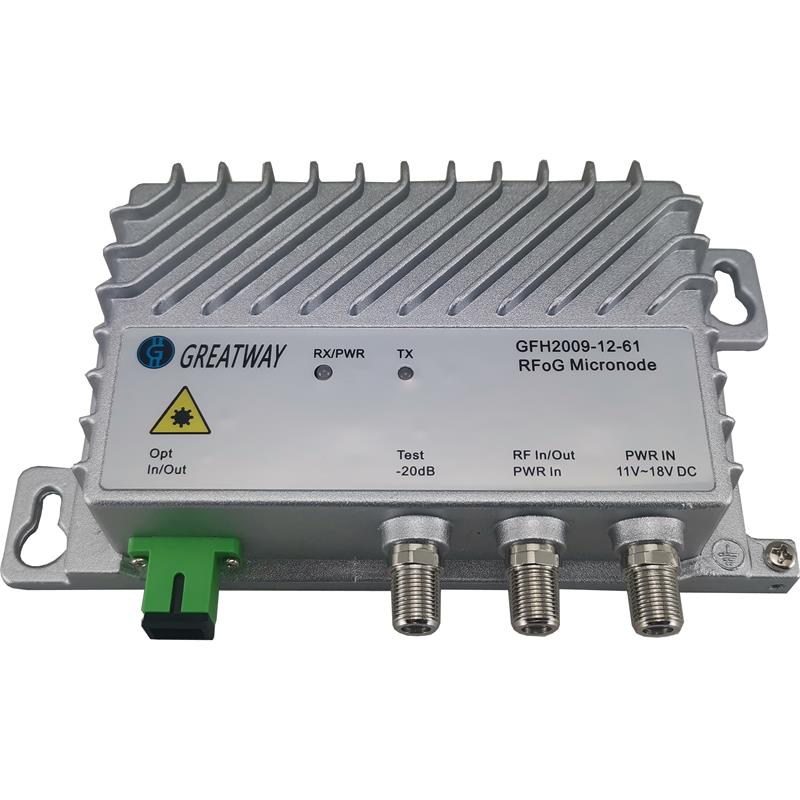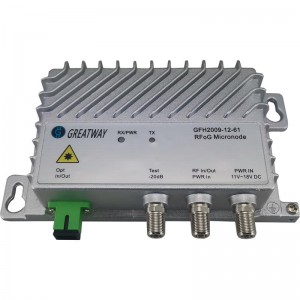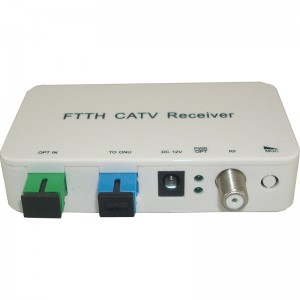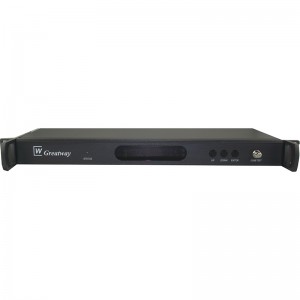GFH2009 RFoG FTTH Micronode
Product Description
RFoG means “Radio Frequency over Glass”. The technical standard is released by SCTE in the document SCTE-174-2010, which defines the burst mode CATV return path laser turning on and turning off when the two-way optical node receives cable modem upstream signals. Return path noises are the main concern of two-way CATV system. All cable modems or CATV terminal noises are sent back to the Headend. In RFoG PON system, the RFoG micronode connecting with the working cable modem turns on only while other RFoG micronodes are off. There is only one RFoG micronode return signal to CMTS, much less noises than the regular two-way CATV system.
Since more channels bonding at Docsis 3.0 and Docsis 3.1 system, there would be an OBI (Optical Beat Interference) issue due to two or more same wavelength lasers arriving at one photodiode at the same time. To avoid OBI, there must be different laser wavelengths at RFoG Micronode in the same PON system.
RFoG Micronode enables CMTS and Cable Modem services migrating from HFC to PON “Fiber to the home”.
GFH2009 RFoG MicroNode is designed to receive 1550nm broadcasting RF or IP HD video from Passive Optical Network (PON) and send upstream cable modem signals at 1610nm or other CWDM wavelength. GFH2009 supports the return RF signal burst mode transmission, allowing one cable modem to communicate with CMTS at the time section of TDMA. GFH2009 outputs bi-directional interactive RF services. GFH2009 is designed to support DOCSIS2.0, DOCSIS3.0 and DOCSIS3.1.
Other Features:
• Compact Aluminum Housing.
• 1002/1218MHz forward path RF bandwidth.
• 17dBmV RF output for FTTH.
• ALC effective at -7dBm~+1dBm optical input.
• 5~42MHz/85MHz/204MHz return RF bandwidth.
• Reverse RF over 1310nm or 1610nm DFB laser working at burst mode.
• Cost effective CWDM return path laser option for OBI free.
• LED display forward and return optical working status.
• 6KV Surge Protection.
• 12V DC power at RF port.




